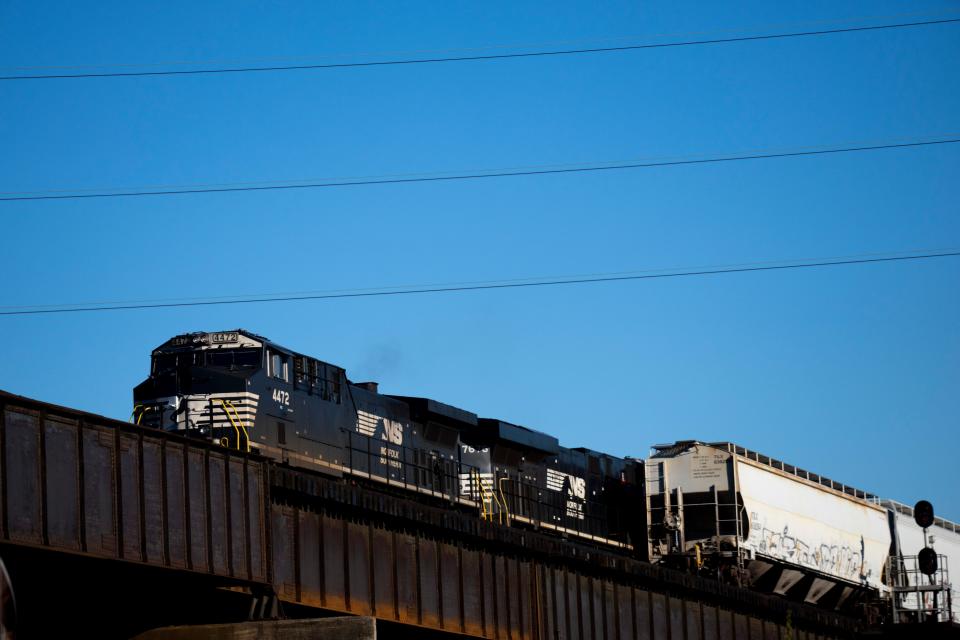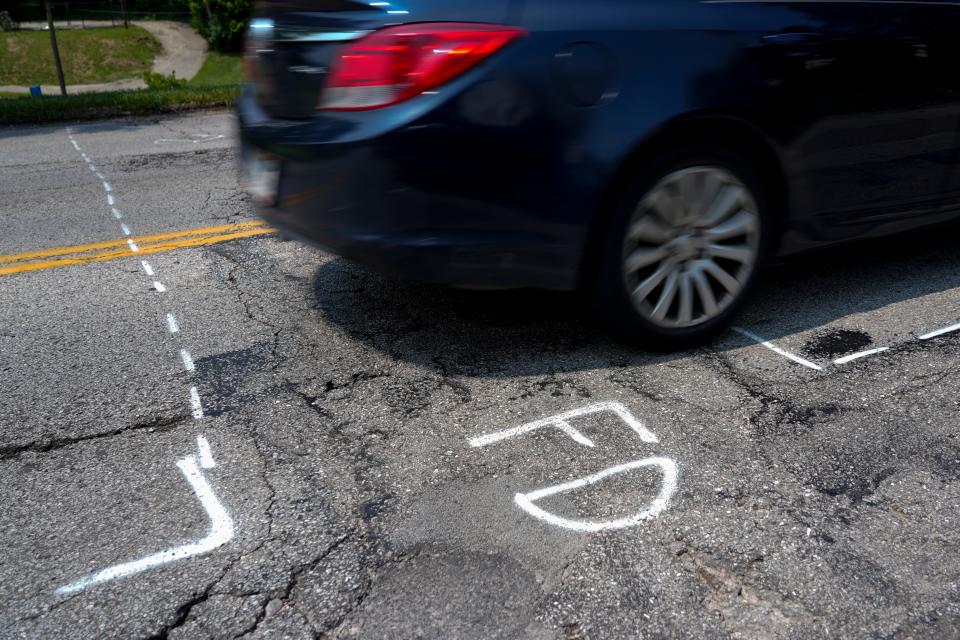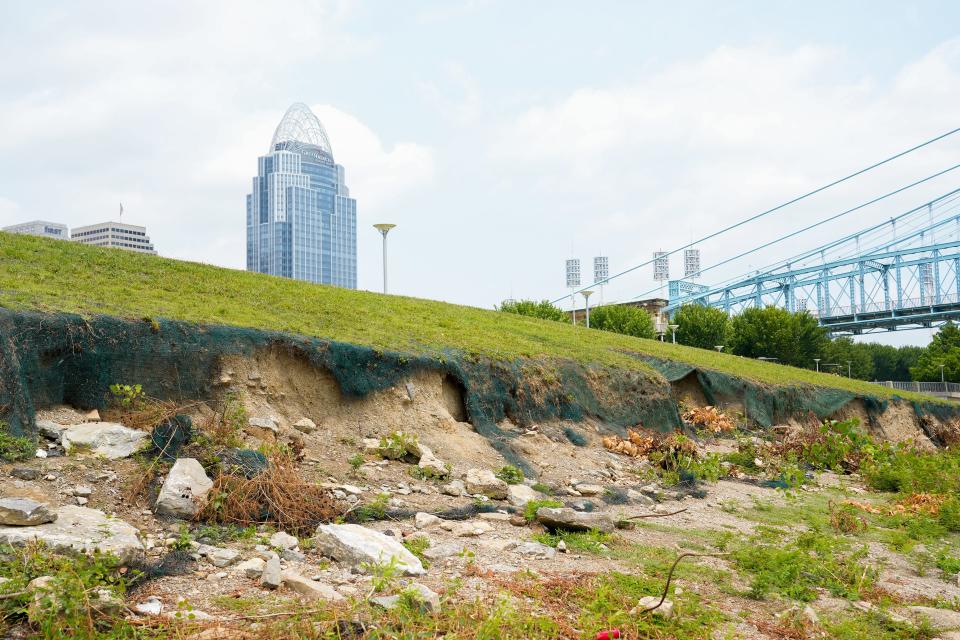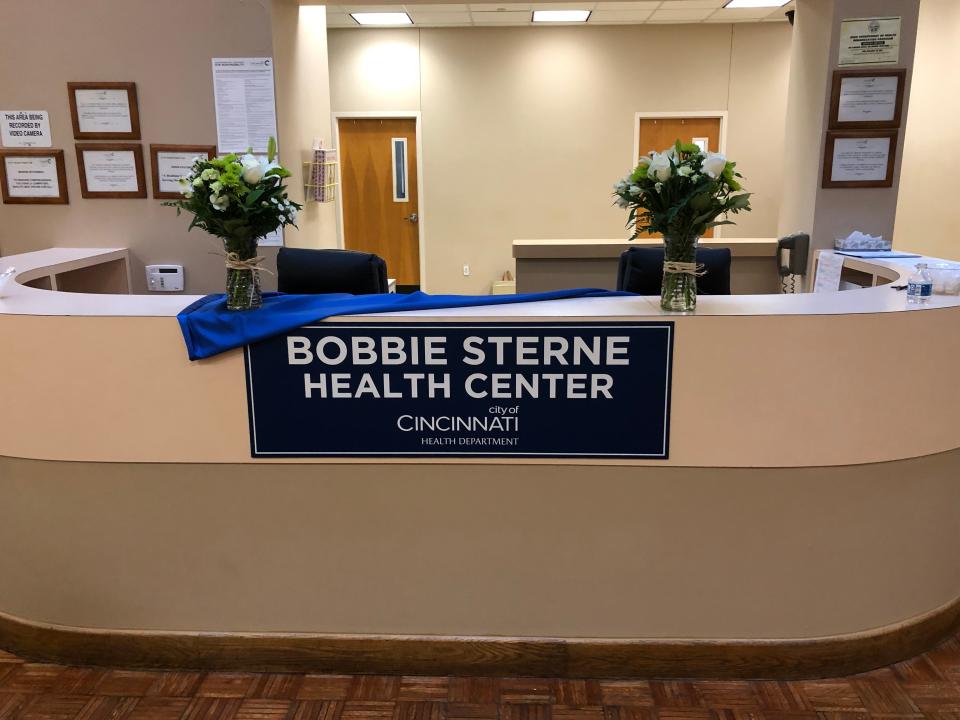Cincinnati railroad sale would pay for road fixes, new fire houses and more in $250M plan
The city of Cincinnati laid out a 10-year plan detailing how it would spend proceeds from the proposed sale of the railroad it leases to Norfolk Southern Corp.
The goal: to alleviate voter concerns the money would be spent on frivolous and nonessential things.
The $250 million "Cincy on Track" plan includes big-ticket repairs to parks, health center renovations, park upgrades and $48 million for street repairs, according to a report set to be discussed Tuesday by Cincinnati City Council at a special 2:30 p.m. Budget and Finance Committee meeting.
Read the plan at the bottom of this story.
It's unclear if city council intends to vote on the plan and if so, when they would. The election is a little over a month away.
The city of Cincinnati owns the Cincinnati Southern Railway and the board that oversees it wants to sell it, arguing the $1.6 billion sale would be a better deal for citizens than continuing to lease it to Norfolk Southern Corp. The sale requires voter approval in November.
The city has about $500 million in deferred capital needs, the city administration has estimated. The project list is based on the top 10 critical infrastructure needs provided by city departments in a report to council dated March 15.
Among the projects proposed to get railroad proceeds:
Three fire stations would be replaced, as would the Bobbie Sterne and Northside health centers.
The Dunham and Pleasant Ridge recreation centers would be renovated.
Columbia Parkway landslides would get a $1.5 million fix.
Smale Riverfront Park would get $17 million to shore it up from river erosion.
Not in the plan: Streetcar expansion, anything related to building a new arena or the capping of Fort Washington Way, a project being bandied about by city leaders and the business community.
This a is nonbinding proposal. Even if city officials in office now vote to approve the plan, they could change it with a new vote and future elected officials could later change it with a vote.
And there's no guarantee the city won't shift money around anyway.
What happens to the capital budget?
The memo says using sale proceeds on capital projects would allow the city to be "flexible" with money they would have used on capital projects in the past. In other words, there's no guarantee that what the city has typically spent on capital projects (roughly $60 million a year, including lease fees from the railroad) would continue to be dedicated to capital projects.
But for now, the memo does answer one of the most frequent questions asked by Enquirer readers about the sale: How would the railroad sale money be spent?
"The Cincy on Track plan seeks to address the city's old, outdated, and dilapidated facilities and the infrastructure that have been chronically underinvested in," the memo says. "The plan takes an inclusionary and intentional approach to addressing systemic issues to ensure that residents and businesses in the city have an opportunity to grow both economically and socially within the community they call home."
The plan calls the money "desperately needed" and says "investing in our capital infrastructure is one of the greatest needs for the city."
The plan adheres to Mayor Aftab Pureval's promise that every neighborhood would benefit from the proceeds.
Broadly, the plan calls for $250 million to be spent over 10 years on:
Parks: $40.7 million.
Recreation: $27.6 million.
Streets and sidewalks: $101 million.
Public services, including police and fire facility upgrades: $49.6 million.
Health: $31.1 million.

Streets and sidewalks

The project list includes:
Mill Creek Road Bridge rehabilitation: $500,000.
Streets rehabilitation: $48.2 million.
Asphalt speed hump reconstruction: $2.5 million.
Converting electric lights to LED: $13.5 million.
Columbia Parkway landslide remediation: $1.5 million.
Streetlight replacement in the central business district: $3.5 million.
Lighting replacement: $5.5 million.
Remove downtown lighting circuits from Duke Energy manholes: $8.5 million.
Traffic signal boom replacements: $13.2 million.
Replacing pavers in the crosswalks and sidewalks in the Central Business District: $4 million.
Parks

The project list includes:
Restroom/comfort station restoration: $1 million.
Playground restoration: $1 million.
Mount Echo Park: Pavillion restoration and maintenance garage improvements: $2.1 million.
Small Riverfront: River edge stabilization: $17 million.
French Park: French House grounds improvements, culvert and turf replacement: $575,000.
Fairview Park: Overlook stabilization: $1 million.
Parkwide lighting, security, help box and safety improvements: $1.3 million.
Parks headquarters improvements: $1.6 million.
McEvoy Park renovation: $2.5 million.
Jackson Hill Park renovation: $725,000.
Bellevue Pavilion stabilization: $6 million.
*One part of the memo mentions Ault Park cascade and pavilion renovation, but later in the memo it does not appear on the spending list.
Recreation
The project list includes:
Playground equipment and amenities for 10 sites (not listed): $1.8 million
Renovation of five (not listed) athletic fields: $1.3 million
Dunham Recreation Center Renovation: $10 million
Pleasant Ridge Recreation Center renovation: $4.8 million
Riverside Sports Complex, boat dock facilities renovation: $50,000
Millvale Recreation Center building code issue: $100,000
Leblonde Aquatic Facility: $1.6 million
Winton Hills Aquatic Facility pool renovation: $4.3 million
Mount Adams Aquatic Facility renovation: $2.4 million
Health

The project list includes:
Replace the Bobbie Sterne Health Center: $10 million.
Replace health department administration building: $7.5 million.
Replace the Northside Health Center: $5 million.
Price Hill Health Center interior remodel, parking lot expansion and new air handler: $2.1 million.
Parking lot improvements and generators at multiple centers: $1.3 million.
Public Services
The project list includes:
Replace Fire Station 8 in Pleasant Ridge: $7.2 million.
Replace Fire Station 2 in Carthage: $7.2 million.
Replace Fire Station 49 in Madisonville.
City Hall HVAC and cooling tower replacement: $4 million.
Radcliff Emergency Operations Center HVAC and roof replacement: $4 million.
Cormany Garage renovation: $5 million.
College Hill Town Hall renovation: $5 million.
801 Linn Street police facility renovation: $5 million.
West Fork Incinerator demolition and site reuse project: $5 million.
About the proposed sale of the Cincinnati Southern Railway
The city of Cincinnati owns the Cincinnati Southern Railway, which is 143 years old and runs from Cincinnati to Chatanooga, Tennessee. It's overseen by a five-member board selected by the mayor. The board has long leased it to Norfolk Southern Corp. and the current lease, which brings in roughly $25 million a year, expires in 2026.
The current lease gives Norfolk Southern the sole right to the next lease. During negotiations, Norfolk Southern offered to buy the railroad and the board agreed at a price of $1.6 billion. The plan is to create a trust, then spend investment money from the trust on infrastructure needs, which is estimated at anywhere from $50 million to $80 million a year. The city plan is based on an estimate of the return being $56 million a year.
The board agreed to the sale, but citizens have to approve it in the November election.
The money, under state law, can only be spent on current infrastructure needs. However, that too could be changed at any time by a state lawmakers vote if they wanted to.
Cincy on track report by SACoolidge on Scribd
This article originally appeared on Cincinnati Enquirer: How will money from the Cincinnati railroad sale be spent?

